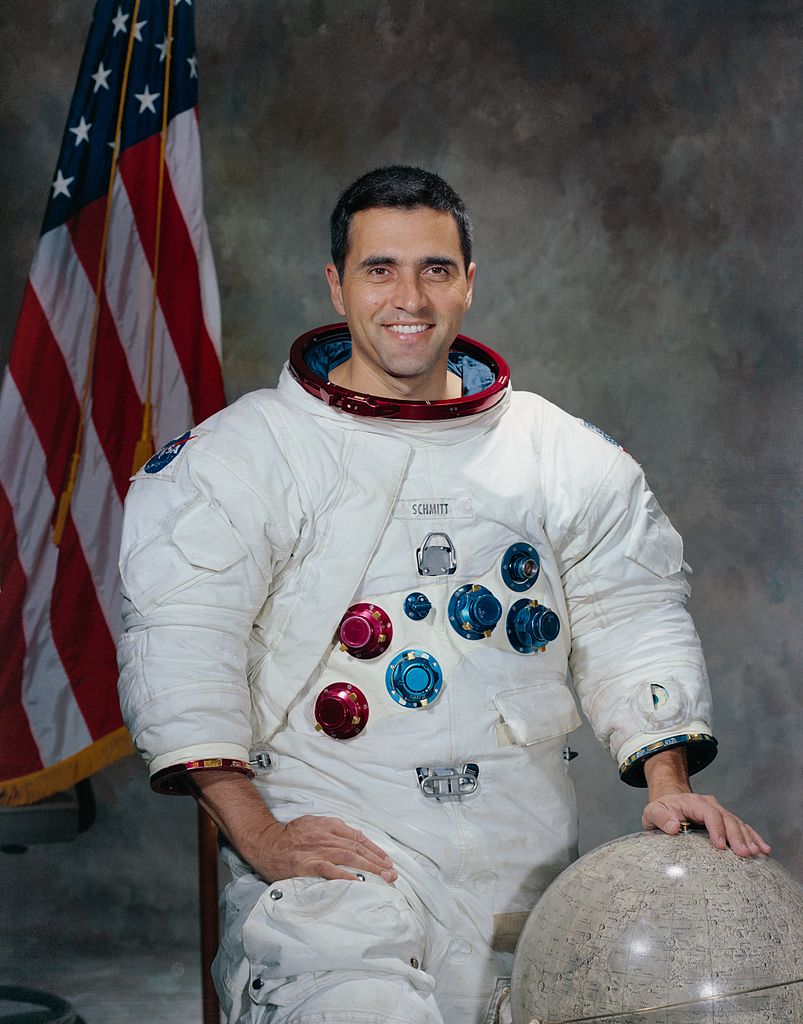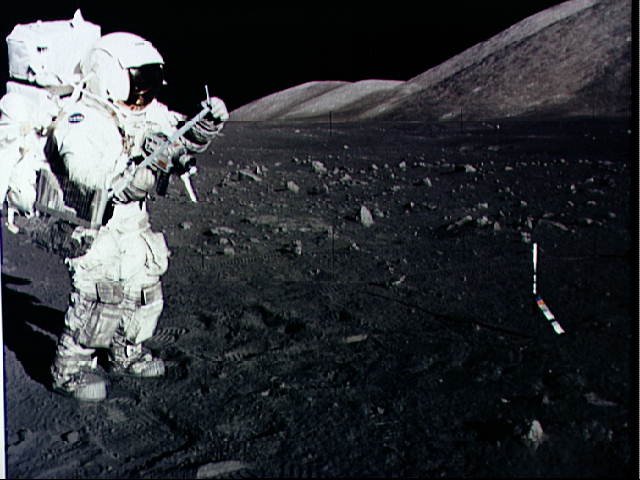Harrison Schmitt: Geologist on the Moon

Harrison "Jack" Schmitt was the first person initially trained as a scientist to walk on the moon. Originally a geologist, he was selected by NASA in June 1965 along with a group of other scientist-astronauts – the first group not to be test pilots.
In his early years with the agency, Schmitt provided the moon-bound crews with information on how to recognize and catalog geologic features on the moon.
Schmitt was assigned to be a backup crew member for Apollo 15, then – when his ride on the canceled Apollo 18 mission evaporated – assigned a slot on Apollo 17, the last mission to the moon.
Stumbling into space
Schmitt didn't grow up hoping to work in space, but stumbled into the business when he was looking for a job in 1964.
He wrote to Eugene Shoemaker, a well-known planetary geologist who was a key voice in the Apollo mission science. Shoemaker himself, Schmitt recalled in a 1999 interview with NASA, had seen Schmitt's strong U.S. Geological Survey exam results and was about to write to Schmitt himself.
Schmitt ended up working with Shoemaker. That same year, 1964, he was working with the U.S. Geological Survey in Arizona and heard that the National Academy of Sciences was looking for volunteers for scientist-astronauts.
"I thought about 10 seconds and raised my hand and volunteered," Schmitt recalled.
"Primarily because I felt—I can remember feeling, at the time, that if I didn’t volunteer, no matter what happened to my application, that I'd almost certainly regret it when human beings actually went to the moon."
NASA selected Schmitt in June 1965. The geologist then threw himself into flight training with the Air Force, completing a year-long course to get basic training underneath his belt.
Moving to the moon
Schmitt was assigned as a backup to the Apollo 15 mission. Traditionally, astronauts who were assigned to a backup crew in the Apollo years could expect a prime assignment three flights later, providing they performed well and no health issues came up in the meantime.
Schmitt's crew, however, lost the chance to head to the moon themselves when Apollo 18 was cancelled. The agency was undergoing severe budget cuts and was trying to preserve its resources for the Skylab space station and, eventually, the space shuttle.
Meanwhile, the Apollo 17 crew was preparing for the last trip to the moon. NASA official Deke Slayton, who was responsible for crew assignments, sent his recommendation of Eugene Cernan, Joe Engle and Ron Evans to NASA headquarters.
According to Cernan's autobiography, "The Last Man on the Moon," Slayton received word that Schmitt absolutely had to be on the flight. (While the reason was not disclosed in the book, the scientific community had been lobbying publicly for a geologist on the moon.) It was decided to switch out Engle for Schmitt, meaning Engle would forever lose his chance to be on the moon.
"I was aware of various press and informal activities, trying to convince NASA that I should fly on a mission, either 18 or, when that wasn’t available, then 17," Schmitt said.
"But it was not something that affected what we were doing on Apollo 15. It was just something we were aware of; and we ... knew that we were sort of in competition with Gene Cernan’s crew for Apollo 17 once 18 had been cancelled."

'Perfectly competent'
Schmitt, added Cernan in his autobiography, was "proved to be perfectly competent as an astronaut." It was of course a difficult time for the Apollo 17 crew, but Schmitt's skills likely helped smooth the way with the other astronauts.
The three men left for the moon in December 1972 for the Taurus-Littrow region, a spot believed to be a possible hotbed of volcanic activity. In more than 20 hours of work on the surface, it was Schmitt that spotted the proof – orange volcanic beads that likely were indications of a surface vent.
"The orange soil never looks as orange to you in a picture as it did to us while we were on the moon," Schmitt recalled. "A recent book by Michael Light, 'Full Moon,' has digitized ... some of that picture, and it does show (at least in one part of a panorama) — it does show the best orange for that soil that I’ve seen yet. But still not quite as bright as it was for us."
Schmitt resigned from NASA in 1975 to run for the U.S. Senate as a representative for the state of New Mexico. He won the election, and served a six-year term starting in 1977.
In past years, Schmitt also worked with the NASA Advisory Council and the Planetary Society, but stepped away from both. Around the same time, he criticized NASA in 2008 for its decision to focus on human Mars exploration rather than lunar exploration.
Since then, he's taught, consulted and also given numerous lectures about his time on the moon. Schmitt continues these activities today.
— Elizabeth Howell, SPACE.com Contributor
Join our Space Forums to keep talking space on the latest missions, night sky and more! And if you have a news tip, correction or comment, let us know at: community@space.com.
Breaking space news, the latest updates on rocket launches, skywatching events and more!

Elizabeth Howell (she/her), Ph.D., was a staff writer in the spaceflight channel between 2022 and 2024 specializing in Canadian space news. She was contributing writer for Space.com for 10 years from 2012 to 2024. Elizabeth's reporting includes multiple exclusives with the White House, leading world coverage about a lost-and-found space tomato on the International Space Station, witnessing five human spaceflight launches on two continents, flying parabolic, working inside a spacesuit, and participating in a simulated Mars mission. Her latest book, "Why Am I Taller?" (ECW Press, 2022) is co-written with astronaut Dave Williams.
